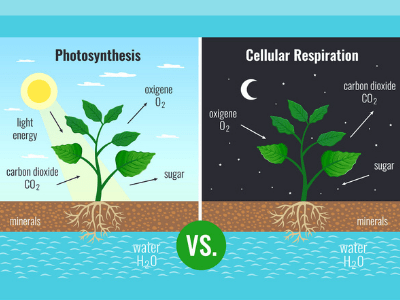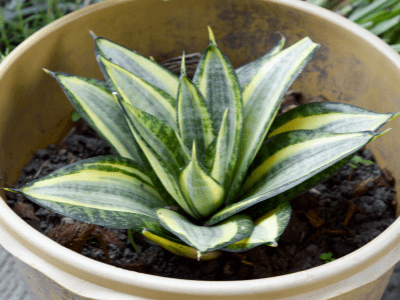Have you ever wondered how much snake plant produce oxygen?
Especially commonly known as the air-purifying houseplant…
… it is obvious then that they produce oxygen enough for all members of the family, right?
Hear it from Holy!
It’s amazing how plants supply oxygen for humans of this world.
Have we ever thanked plants and mother nature for such a blessing?
In my part, the least I can do is take care of the plants around me.
Especially my indoor plants and houseplants that I decided to purchase myself.
One of the most striking plants that I collect the most is the snake plant.
They’re relatively easy to care for, so it’s a win-win solution for both of us.
Now the question is, how much oxygen do snake plants produce.
Is it enough for me already, or do I take too much of them?
Well, let’s find out!
By knowing the amount of oxygen the snake plant produces.
It will help us appreciate them more and it adds up to our knowledge, right?
Without further ado…
Can Snake Plant Produce Oxygen At Night?

Many plants are strategically placed throughout the house for decoration and to maintain feng shui.
Did you know, however, that some of these same plants have health benefits as well?
The snake plant, also known as mother-in-law’s tongue is a hardy succulent…
… that can grow from 6 inches to several feet tall.
Snake plants produce oxygen, it also has a number of health benefits…
…in addition to providing some ambiance.
This greatly contradicts the notion that snake plants are unlucky, because they are actually very beneficial!
Good Quality Oxygen
According to several websites, plants produce high-quality oxygen.
There isn’t anything like that. Oxygen is just that: oxygen.
It’s a simple molecule, and the oxygen produced by plants is identical to that found in the atmosphere.
have you ever wondered...
How Much Oxygen Do Humans Consume?
The science of human oxygen consumption is well-understood.
Each day, an adult consumes about 550 liters of oxygen.
So, what about…
How Much Oxygen Does A Snake Plant Produce?
The amount of oxygen produced by a plant is much more difficult to calculate…
… because it is dependent on a number of factors.
Plants produce oxygen as a byproduct of producing sugars, which are their primary source of energy.
Slow-growing plants require significantly less sugar than fast-growing plants…
… and thus produce significantly less sugar and oxygen.
Photosynthesis is harmed by low light levels, which results in less oxygen production.
Photosynthesis and, as a result, oxygen levels are influenced by temperature, water levels, and available nutrients.
Photosynthesis occurs when a plant absorbs carbon from the air and stores it in its leaves, stems, and roots.
Each molecule of CO2 absorbed increases the weight of the plant…
… by one atom of carbon and produces one molecule of O2.
By weighing the plant, we can get an estimate of the amount of oxygen produced.
For every 150 grams of plant tissue grown, 32 grams of oxygen are released. Under normal temperature and pressure, this is 22 liters of oxygen.
Marco Thorn, Post-doc/Fellow, Cell Biology, Institute of Botany
Do you know that…
Snake Plants Also Produce Carbon Dioxide (CO2)

Plants convert CO2 to O2 through photosynthesis, but they also breathe.
They convert sugar and oxygen into CO2 and water during respiration.
Cellular respiration, the process by which organisms combine oxygen with foodstuff molecules, diverting the chemical energy in these substances into life-sustaining activities and discarding, as waste products, carbon dioxide and water.
Britannica
This is the polar opposite of photosynthesis, and it occurs in all cells at all times of the day and night.
Because of the carbon they accumulate, plants grow larger and heavier over time.
As a result, we know that the CO2 produced by respiration…
…is less than the CO2 used in photosynthesis; otherwise, they would not be able to grow.
Respiration reduces the net amount of oxygen produced by plants…
…especially at night when photosynthesis is absent.
However…
Do Indoor Plants Improve The Quality of Air?

So, while houseplants cannot provide all of the oxygen we require,
…do they help to raise the oxygen level?
According to the NASA Fact Sheet, air contains 20.95 percent oxygen and 0.04 percent carbon dioxide.
The oxygen levels in a room would rise from 20.95 percent to 21 percent…
… if enough plants were present to absorb all of the CO2 and convert it to oxygen.
This increase would be difficult to detect and have no impact on humans.
Remember that this is the maximum increase possible, assuming that plants use all of the CO2 available.
In practice, the increase is even smaller.
Pollution Filtering
Indoor air quality is often much worse than that found in densely populated cities, according to studies.
Snake Plants work twice as hard to remove dangerous pollutants like benzene, formaldehyde…
…and xylene from our indoor settings, according to the same Nasa Clean Air Study cited above.
This means NASA actually recommended snake plants as one of the best plants which help purify your indoor space.
Regular household items such as carpets, furniture polish, and cleaning supplies contain these dangerous contaminants.
Good for Allergies
Plants with such strong air-purifying and oxygen-producing abilities would, of course…
…aid in the fight against allergies by removing dangerous pollutants and volatile airborne chemicals that can worsen allergies and even make you sick.
When you combine this with oxygen-producing abilities, you can breathe more easily at any time of day or night.
Snake Plant Produce Oxygen Around the Clock

Plants are excellent at cleansing the air and producing oxygen, but they do not create oxygen 24 hours a day, seven days a week.
Photosynthesis is the process through which most plants create oxygen solely during the day.
Only a few plants create oxygen at night.
Snake plants, which are considered one of the best houseplant according to Vastu Shastra, is one of them.
This makes it the ideal plant for a more restful night’s sleep in your bedroom.
Higher oxygen levels can facilitate a night of deeper sleep, as we discussed in the last suggestion.
Where to Start
Growing out snake plants from seeds is pretty hard, especially for the newer gardener or people that don’t have any time to spare.
Luckily, there are a lot of small snake plants that have already grown in the market for you to buy!
If you want snake plants that are already braided or decorated, we also have great choices for you.
Other Plants that are Good for Indoor Air
Maybe the snake plants aren’t to your liking.
If you want more suggestions for other plants, these are what we have for you.
Spider Plant
Let’s start with one of the simplest plants to grow, even if you don’t have a green thumb.
To keep a spider plant green and growing, all you need is indirect light…
…well-drained soil, and a location that doesn’t become too hot.
Though it produces small white flowers, the spider plant is mostly a foliage plant with vibrant green and yellow striped leaves.
It has long tendrils with “baby” plant buds at the end, and its long narrow leaves look attractive in a hanging container.
You can either leave them alone or cut them off to start a new plant.
Peace Lily
What about an air-purifying plant with a flower on it?
Peace lilies have huge, exquisite white blooms and dark green leaves in abundance.
They’re also simple to maintain.
You know it’s time to give it a drink when it starts to droop a little (usually just once a week).
They work best in indirect light, so they’re ideal for rooms that don’t get much sun.
Your lily may only bloom once a year, in the spring, but if you give it some extra fertilizer, it may blossom again in the fall.
Pothos
If you have a proven black thumb, a pothos vine is a way to go.
They produce enormous yellow and green leaves on trailing vines and are incredibly durable houseplants that anyone can maintain alive.
Choose a sunny location with little direct light, or put up a pothos in a lower light area if that’s what works best for you.
If it’s in a shadier position, the variegated leaves will change color and grow greener.
Water as needed, but don’t be concerned if the soil dries out.
With a pothos plant, it’s better to be a touch too dry than too damp.
Sum Up
See? Having the Snake plant produce oxygen is a good choice for you.
It’s cool, it’s useful, it’s easy to have and to take care of!
What else do you need? In a pandemic like this, is a good choice for you to have a new activity…
…and having a snake plant is a good choice for you to have!
Conclusion
Last thing for sure. This plant needs you to take care of them carefully,
…remember plants need the “love” too.
Alright, that’s all for today! Do you have any questions about all of this?
Or do you want to add some method to snake plant grow very well and healthy?
Let me know your recommendation from the comment below or contact us.
I hope you can now take care of your snake carefully and grow it big! Thanks for reading this article!
If your plant has this lovely blossom, enjoy the show!
Frequently Asked Questions
Can a snake plant purify air?
Another popular houseplant, the snake plant (also known as mother-in-law’s tongue) has a multitude of air-cleaning tricks up its sleeve.
It removes formaldehyde, xylene and nitrogen oxides from the air, and at night continues its hard work.
Do snake plants give oxygen at night?
Does snake plants give oxygen at night?
Similar to other household succulents, snake plants help to filter indoor air.
What’s unique about this particular plant is that it’s one of the few plants that can convert carbon dioxide (CO2) into oxygen at night.
This quality makes it an ideal plant for bedroom decor, since it can help regulate healthy airflow.
Can I place my snake plant next to my bed?
Yes, you can. At night, usually plants take in oxygen and release carbon dioxide, a process called respiration.
However, the Snake Plant is one of the lucky few that continues to produce oxygen at night, making it the ideal plant to place in your bedroom for better sleep.







